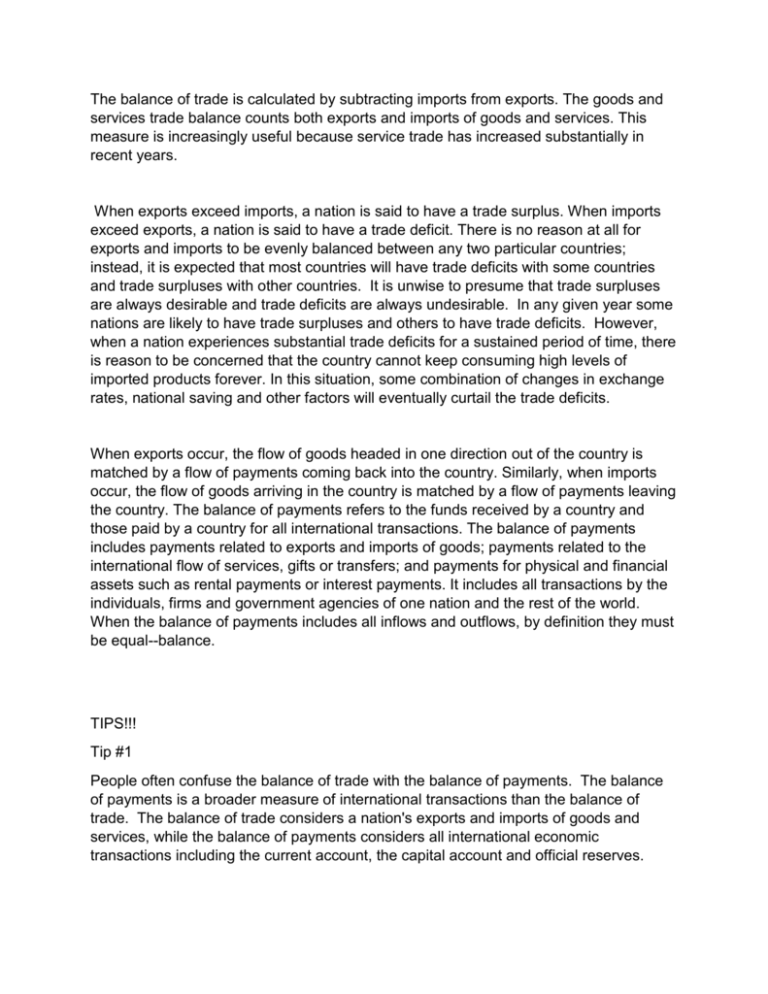The balance of trade is calculated by subtracting imports from
advertisement

The balance of trade is calculated by subtracting imports from exports. The goods and services trade balance counts both exports and imports of goods and services. This measure is increasingly useful because service trade has increased substantially in recent years. When exports exceed imports, a nation is said to have a trade surplus. When imports exceed exports, a nation is said to have a trade deficit. There is no reason at all for exports and imports to be evenly balanced between any two particular countries; instead, it is expected that most countries will have trade deficits with some countries and trade surpluses with other countries. It is unwise to presume that trade surpluses are always desirable and trade deficits are always undesirable. In any given year some nations are likely to have trade surpluses and others to have trade deficits. However, when a nation experiences substantial trade deficits for a sustained period of time, there is reason to be concerned that the country cannot keep consuming high levels of imported products forever. In this situation, some combination of changes in exchange rates, national saving and other factors will eventually curtail the trade deficits. When exports occur, the flow of goods headed in one direction out of the country is matched by a flow of payments coming back into the country. Similarly, when imports occur, the flow of goods arriving in the country is matched by a flow of payments leaving the country. The balance of payments refers to the funds received by a country and those paid by a country for all international transactions. The balance of payments includes payments related to exports and imports of goods; payments related to the international flow of services, gifts or transfers; and payments for physical and financial assets such as rental payments or interest payments. It includes all transactions by the individuals, firms and government agencies of one nation and the rest of the world. When the balance of payments includes all inflows and outflows, by definition they must be equal--balance. TIPS!!! Tip #1 People often confuse the balance of trade with the balance of payments. The balance of payments is a broader measure of international transactions than the balance of trade. The balance of trade considers a nation's exports and imports of goods and services, while the balance of payments considers all international economic transactions including the current account, the capital account and official reserves. Tip #2 When thinking about a nation's balance of payments, it's important to realize that it always "balances," unlike a balance of trade, which may show either a surplus or a deficit. Tip #3 Many believe that the purpose of international trade is to have the highest balance-oftrade surplus possible. Question to ask yourself: if the resources of a country should be used exclusively to get little pieces of paper (money) from other countries in exchange for goods and services. Or would it be best to use the foreign exchange received by selling goods and services to other countries to buy and enjoy other goods and services from other countries? The purpose of international trade is to improve our standard of living, not to accumulate the most foreign currency or gold.






